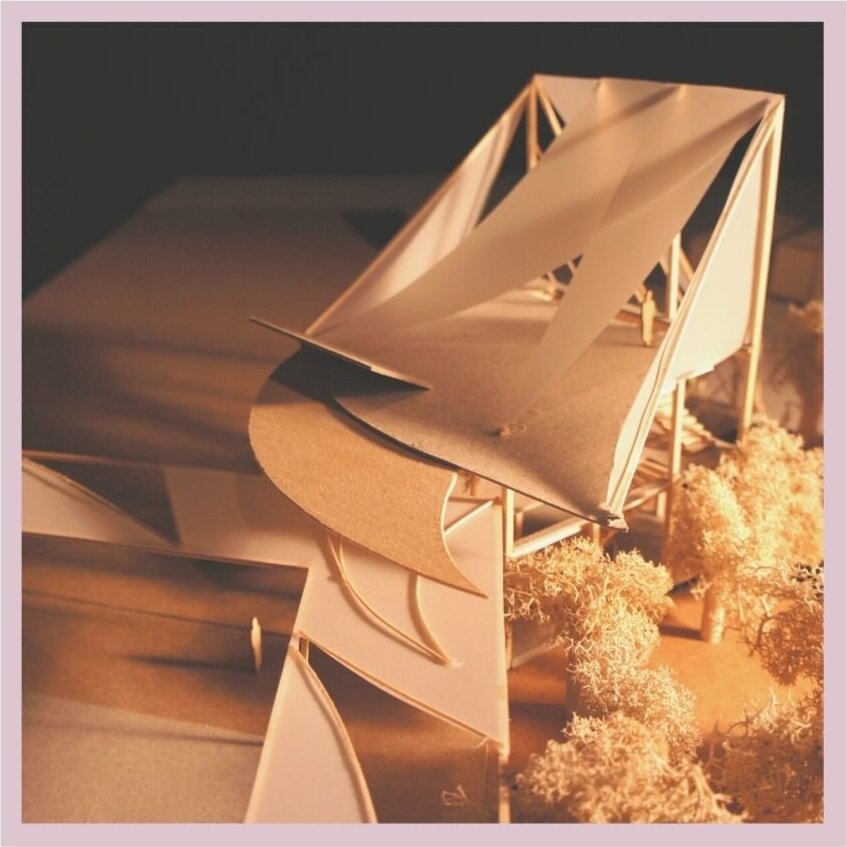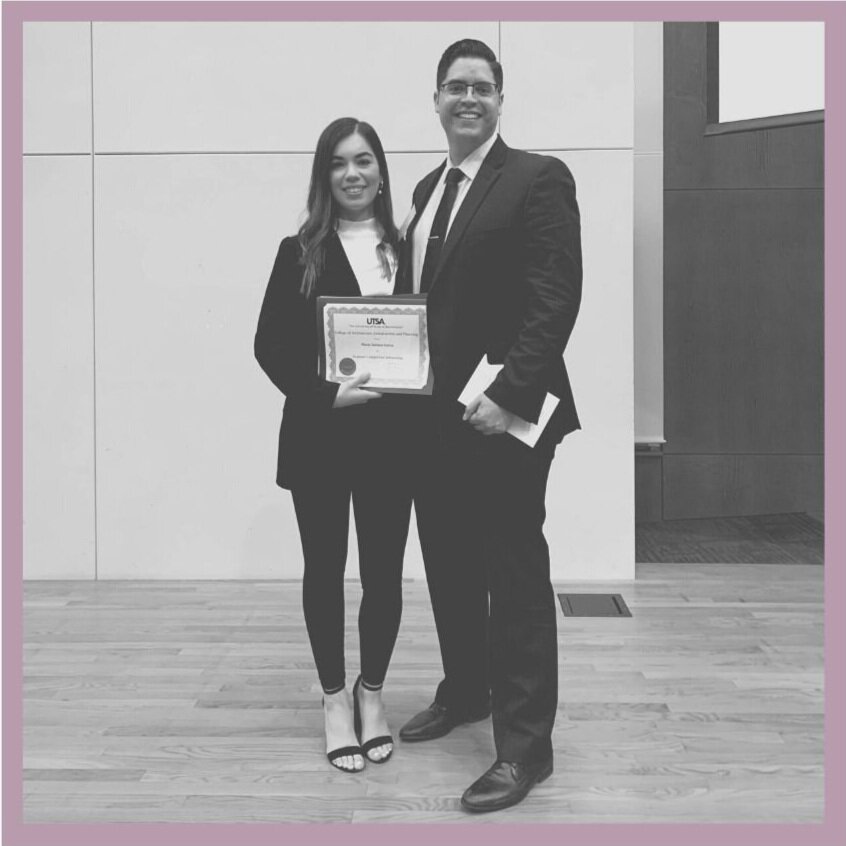MARÍA FERNANDA SALDAÑA GARCÍA
Portrait courtesy of María Fernanda Saldaña García.
Currently Marketing Director for TCM
Master of Architecture Student at The University of Texas at San Antonio (Graduating May 2021)
Maria Fernanda Saldana Garcia is a senior year graduate student about to complete a Master’s Degree in Architecture with a Certificate in Sustainable Design, at the University of Texas at San Antonio. She is currently a Marketing Director using design to further inspire and highlight Hispanic Culture. Her thesis, a narrative on the lack of housing for immigrant families in Oaxaca, intends to raise awareness on proposals for architectural intervention in Mexico. She believes that gender and ethnicity should never limit a woman's path in architecture but instead fuel it with cultural richness and determination.
Maria’s Journey: Life through Architecture
What inspired you to pursue a career in architecture?
My desire to pursue a career in architecture came from several influences; among many things, my mother’s artistic mind, my grandmother’s craft in the kitchen, and my passion for drawing… all made it clear for me that I wanted to design. Architecture then was picked as my medium as I knew spaces could translate into feelings and therefore impact somebody’s life.
Aqua - Mexico City Hotel. Photo courtesy of María Fernanda Saldaña García.
Undergraduate Graduation in 2019 with Maria’s parents. Photo courtesy of María Fernanda Saldaña García.
Do you remember the first time you thought you wanted to be an architect? How did your mother influence your decision?
I was born in the northern city of Monterrey in Mexico in 1994. As a child, my mom’s Mexican tin sculptures and paintings influenced me to use my hands and imagination to create feelings. I carried this sense throughout my life and by the time we moved to the United States my 16-year-old self knew I wanted to be an architect.
Parthenon, TN - feeling the architecture. Photo courtesy of María Fernanda Saldaña García.
Moving to a new country and being seen as different is difficult. How did you find your comfort level in your first semester of architecture school in the studio?
Life became hard when I noticed people saw me as different. Thick brows and accent, long name. I did not feel welcomed at my High School. I struggled and tried to hide my origins, my accent, and my mexicaness. I then started architecture school… and everything changed.
Ascension Moon Project People's Choice Award by Unidays. Photo courtesy of María Fernanda Saldaña García.
Maria’s first physical model, circa 2014. Photo courtesy of María Fernanda Saldaña García.
How did your background as a Latina influence your design decisions in architecture? How did you merge culture and ethnicity with design?
It was in my first-year studio that I felt comfortable with my soul and roots. My pink portfolio made sense to me and others, while my love for Latino architecture was respected. I learned to use my voice to talk about subjects that matter to me and use architecture as the medium.
UTSA Graduate Scholarship LeRoy Braswell Memorial Award. Photo courtesy of María Fernanda Saldaña García.
Mentorship and leadership are crucial to emerging professionals, especially women. How did your boss impact your growth? Tell us about the importance of a mentor.
My first internship was in a local firm in San Antonio, Texas. My boss, a powerful and inspiring woman, not only guided me but also shared her experiences as being one of the only women designers of her generation. She had worked abroad and around and had known people like Zaha Hadid. Her teachings, stories, and advice are some of the most valuable things in my architecture path.
Symmetry - Lessac, France School. Photo courtesy of María Fernanda Saldaña García.
Currently, you work as a Marketing and Design Director for a female-led corporation that focuses on the importation of Mexican products. How do you use creative strategies, as a leader, to better lives for everyone?
As a Marketing & Design Director for a female-led corporation that focuses on the importation of Mexican products; we work directly with farmers and provide proper housing and schooling to their families. My background in design has allowed me to integrate strategies to make their lives better and to highlight female power.
Maria in Minneapolis. Photo courtesy of María Fernanda Saldaña García.
Tell us a bit about your research and studies in migration patterns in Oaxaca, Mexico and its effects on housing types and families. As an aspiring architect, what do you hope to accomplish?
After graduating with my bachelor’s degree, I knew I wanted more. I wanted to be a registered female architect. As a Mexican immigrant I also knew that my Thesis needed to reflect as much reality and as much of me as possible, for it to be honest. I have been focusing my research and studies in migration patterns in Oaxaca, and its effects on housing types and families. This has connected me with so many inspiring women and stories; I believe this era is just the beginning of a greater world to highlight women's strength.
Alamo Museum - San Antonio, Texas. Photo courtesy of María Fernanda Saldaña García.











